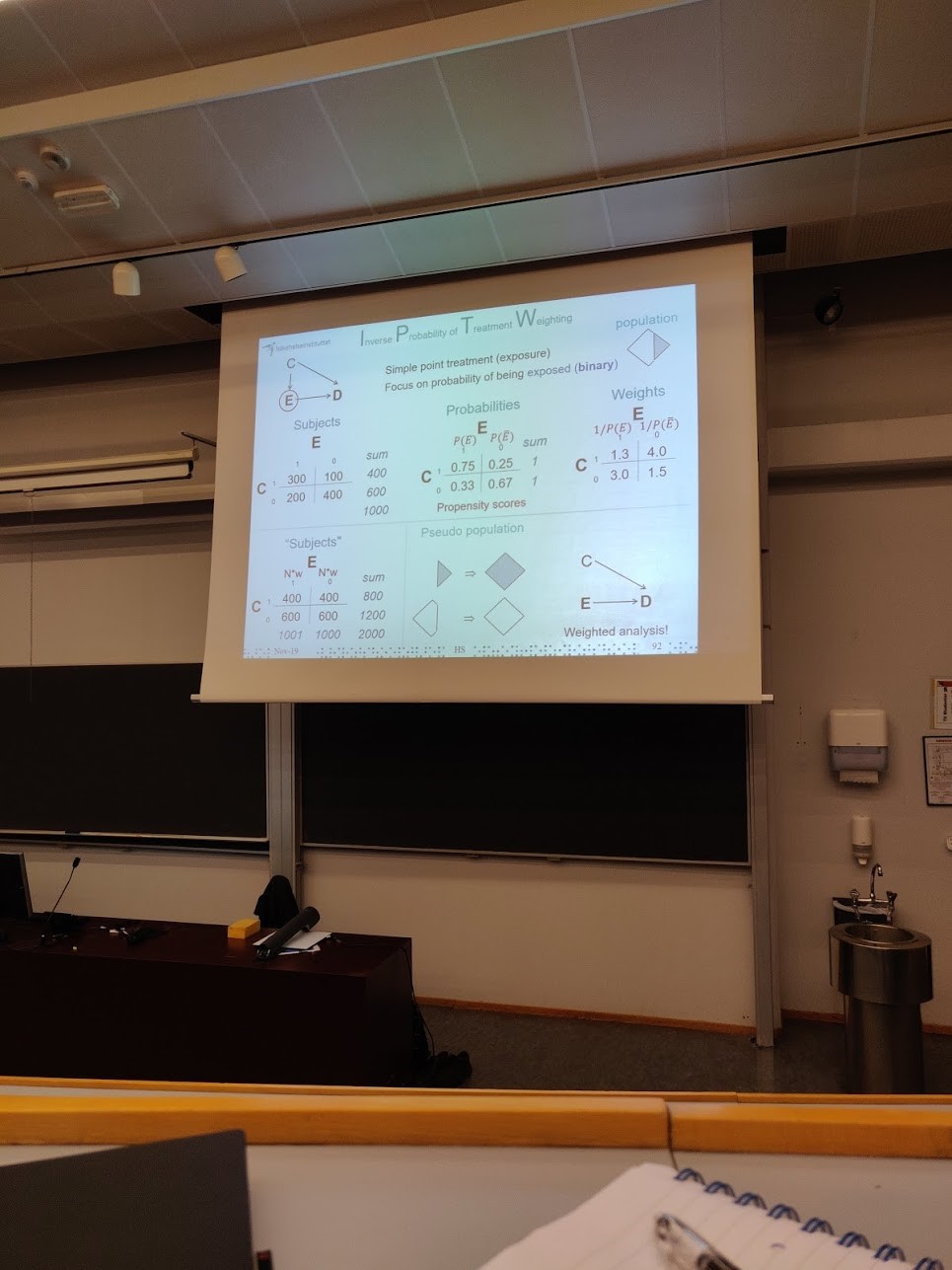My story: Sairah Lai Fa Chen
Being an active EPINOR member from the University of Tromsø made it possible for me to attend a one-week long course on new statistical methods for causal inference (MF9570) at the University of Oslo in November 2019. It was a fantastic, hefty teaching of counterfactuals and mediation analysis.
I was very curious about this course since taking my master’s degree at the University of Oslo. Most public health/epidemiology programmes introduce the concept of directed acyclic graphs (DAGs); however, they stop instruction after quite simple DAG drawing. I was looking forward to gaining more in-depth knowledge about how this a priori analysis of covariates could be put to use in standard statistical analysis. We came out of the course having learned much more.
MF9570 New statistical methods for causal inference was led by Kjetil Røysland from the Department of Biostatistics. Lecturers included Hein Stigum, Jon Michael Gran, Theis Lange, and Morten Valberg. The course began with Hein’s introduction to the concept of directed acyclic graphs (DAGs), which is an increasingly used method for assessing whether certain variables require adjustment in multivariable models. The complex concept of separation theory was introduced as we gained insights to how statistical estimates could be biased when adjusting or not adjusting for more variables in more complex DAGs. There were many small exercises that Hein used to help us understand the theory better.

We moved on to an introduction of counterfactuals from Jon Michael Gran. It was eye-opening to see observational data, which most epidemiologists use to make inferences, through the lens of a randomized control trial. The question of how to achieve an RCT-like observational data set is the goal here, where in a fantasy setting you would want to both expose and not expose the same population. Using two populations, one exposed and the other unexposed, is the reason we have confounding, some we can adjust for and some that are unmeasured. Inverse Proportional Weighting is one method Jon presented to us to create a counterfactual population to best emulate an RCT. Theis Lange introduced mediation analysis through a comprehensive R software package called medflex and led his sections with strong reliance on exercises in R. Morten Valberg concluded with a comprehensive talk about frailty in epidemiology/statistics – where the role of chance in disease causation is an important aspect to consider.
Overall, this course was incredibly useful for all epidemiologists to be aware of and to consider introducing these more advanced methods into our analysis. Happy to have been a part of it!
Sist oppdatert: 15.06.2020 09:02